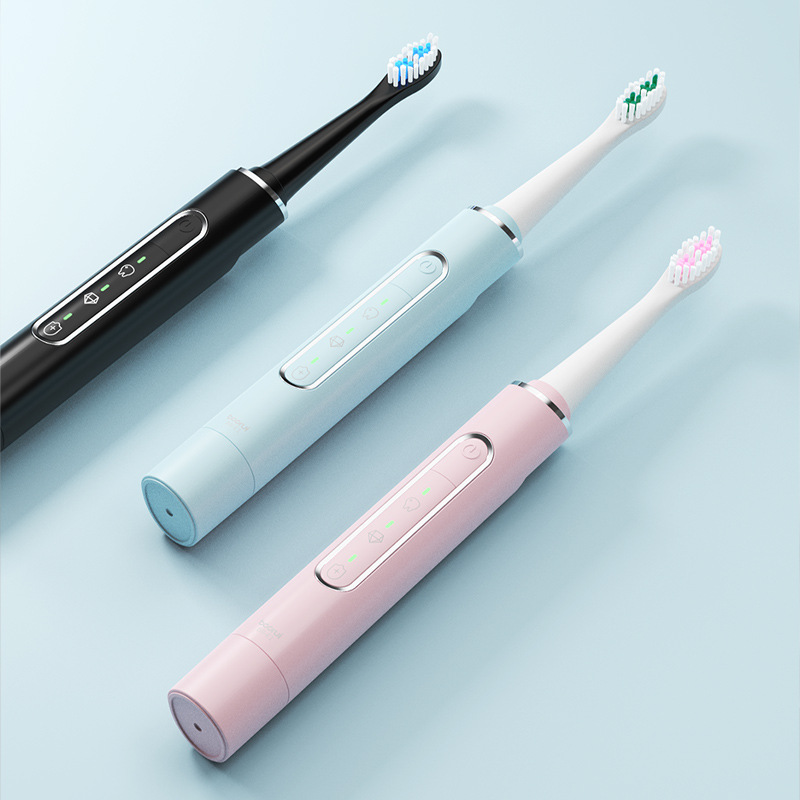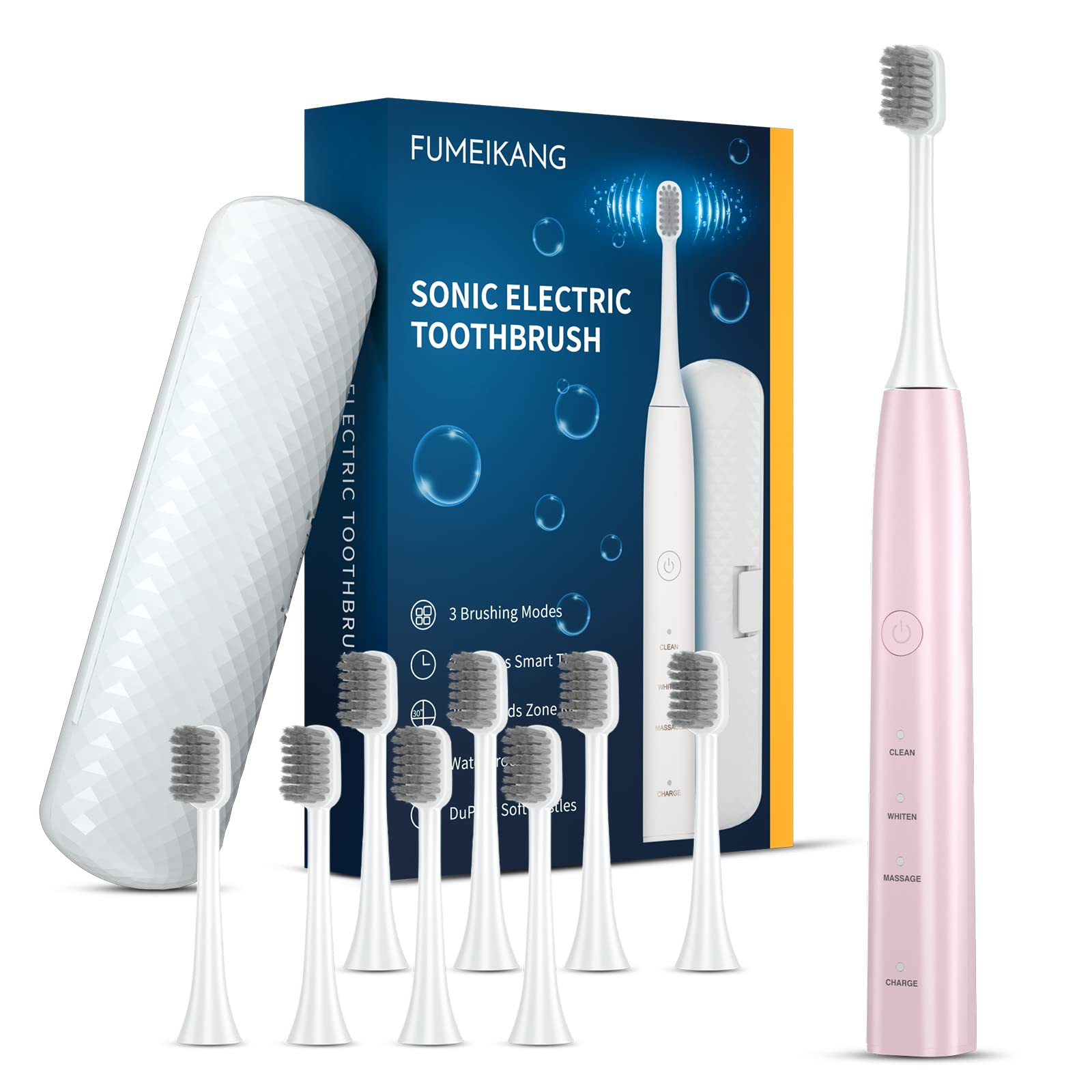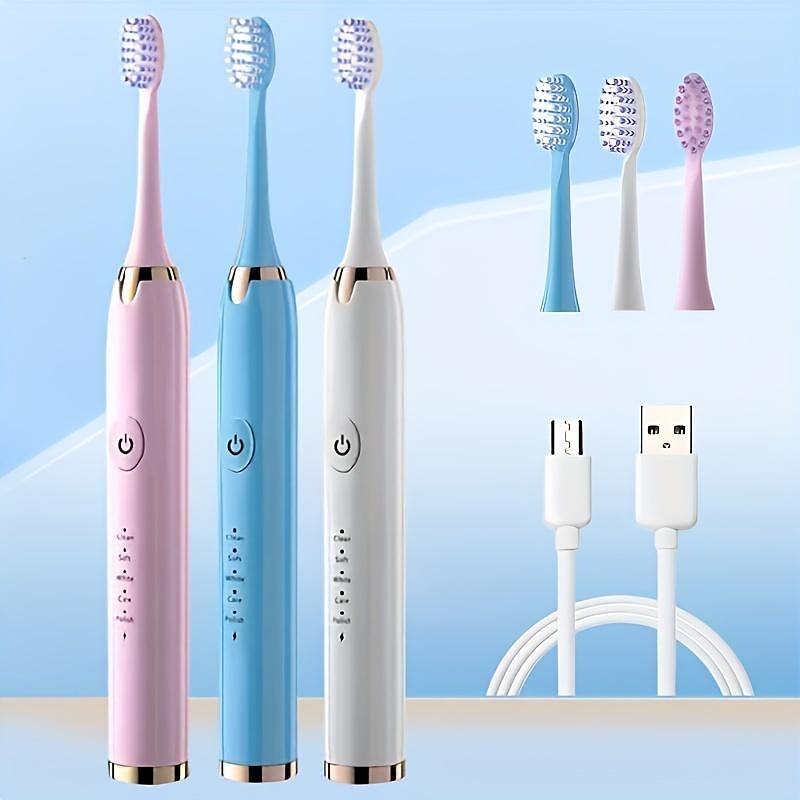Understanding the Electric Toothbrush
Transitioning to an electric toothbrush can be a game-changer for your oral health routine. Unlike manual brushing, electric toothbrushes provide a powered cleaning action, which can enhance plaque removal and stimulate gum health. When considering such a switch, it’s crucial to understand how to brush with an electric toothbrush.

Types of Electric Toothbrushes: Sonic vs. Oscillating-Rotating
When exploring electric toothbrushes, you’ll find mainly two types: sonic and oscillating-rotating. Each operates differently and may suit individual preferences and needs.
Sonic toothbrushes vibrate at high speeds, sending waves through the mouth. This helps clean even the hard-to-reach areas between teeth. They are proven gentle yet effective, suitable for those with sensitive gums or periodontitis. These brushes can also reach beyond the bristles, touching spaces not typically contacted in standard brushing.
The oscillating-rotating variant features a circular brush head that alternates direction. It cleans each tooth individually with its rotating movements. These are particularly good at tackling plaque on the tooth surfaces. However, they might not be as efficient in cleaning between teeth as their sonic counterparts.
It’s important to weigh the pros and cons of each type, considering your own dental needs and preferences. Remember, the best toothbrush is the one that you will use consistently and correctly.
Advantages of Electric Toothbrushes
The electric toothbrush introduces many benefits to our daily oral care routine. Its design provides a thorough clean that can be more efficient than our manual efforts.
Gentle on Teeth and Gums
People with sensitive teeth or gum issues find electric toothbrushes especially beneficial. The powered bristles work with less pressure, reducing the risks of brushing too hard. Gentle vibrations from these toothbrushes massage the gums. This helps prevent gum recession and discomfort.
Enhanced Interdental Cleaning
One of the standout features of electric toothbrushes is their ability to clean between teeth effectively. Sonic toothbrushes, in particular, use rapid vibrations that create cleansing waves. These waves reach beyond the bristles, into the tiny gaps between teeth, and along the gum line. This enhances the removal of plaque and debris, promoting overall dental health.
Electric vs. Manual Toothbrushes: Making the Right Choice
Choosing between an electric and a manual toothbrush often boils down to personal preference. Each type has its distinct features and benefits that may appeal to different users. Understanding these can help you make an informed decision that suits your oral health needs.
Key Considerations for Manual and Electric Options
When pondering over manual and electric toothbrushes, consider these points:
- Cleaning Efficacy: Both can effectively clean teeth if used properly. The main advantage of electric toothbrushes is that they provide a consistent motion which may enhance plaque removal, especially for those who may not have the best brushing technique with a manual toothbrush.
- Ease of Use: Electric toothbrushes are easier to use, making them a good choice for individuals with limited mobility. They do much of the brushing work for you, which can be beneficial for those with arthritis or dexterity issues.
- Pressure Sensitivity: Too much pressure can harm teeth and gums. Many electric toothbrushes have pressure sensors to prevent this, while manual brushing requires more self-control to avoid brushing too hard.
- Oral Health Conditions: If you have sensitive gums or teeth, an electric toothbrush is often gentler and could prevent further irritation. Whereas, a manual toothbrush gives you full control over the force applied during brushing.
- Cost and Accessibility: Manual toothbrushes are typically cheaper and more easily replaced than electric ones. They require no charging or batteries, making them convenient for travel.
- Interdental Cleaning: Electric toothbrushes, particularly sonic ones, provide superior cleaning between teeth. However, none can replace the need for flossing or using interdental brushes.
Ultimately, whether you choose a manual or an electric toothbrush, the key is to brush regularly and correctly. How to brush with an electric toothbrush should be learned effectively to gain the most benefits. Always select options that meet your dental hygiene needs and preferences, as this will encourage consistent use. Your dentist can also provide personalized advice based on your specific oral health.
Step-by-Step Guide to Brushing with an Electric Toothbrush
Learning how to brush with an electric toothbrush can optimize your dental health routine. This guide provides a simplified approach to electric brushing.
Charging and Preparing Your Brush
Before you start, ensure your electric toothbrush is fully charged. This allows maximum power for optimal cleaning. Attach the brush head securely and apply toothpaste. Avoid switching on the brush outside your mouth to prevent splatter.
Mastering the Bass Brushing Technique
Use the Bass brushing technique for efficient cleaning:
- Tilt the brush head at a 45-degree angle against the gum line.
- Gently guide the brush along the teeth’s surface without pressing too hard.
- Begin at the back molars and move slowly from tooth to tooth.
- Clean the insides of teeth with the same delicate sweeps.
- Enjoy the benefits of the electric brush’s motion.
Properly using this method can lead to improved gum health and cleaner teeth. Remember to move the toothbrush’s head slowly and let the bristles do the work. Spend a few seconds on each tooth and clean all areas of your mouth for complete oral hygiene.
When to Replace Your Electric Toothbrush Head
Maintaining your electric toothbrush involves timely head replacements for optimal oral health.
Signs It?s Time for a New Brush Head
Here?s how to know it’s time to replace the brush head:
- Bristle Wear: Look for frayed or bent bristles that lose stiffness.
- Discoloration: Notice a change in color, indicating accumulated plaque.
- Timeframe: Change heads every three months, regardless of appearance.
- Performance Drop: If cleaning feels less effective, swap out the brush head.
- After Illness: Post-sickness, change the head to avoid bacteria.
It is important to pay attention to these signs to maintain dental hygiene. Despite the durability of an electric toothbrush, the head is the part most prone to wear and tear, touching all areas of your mouth. A fresh brush head ensures you continue to get the most thorough clean possible with each brushing session. Remember, using a worn brush head can result in inadequate plaque removal and may lead to dental issues over time. Always keep spare heads on hand to make regular replacements hassle-free.
 Maintenance: Caring for Your Electric Toothbrush
Maintenance: Caring for Your Electric Toothbrush
Proper maintenance extends the life of your electric toothbrush and keeps it effective. Regular cleaning prevents bacteria build-up.
Cleaning and Storing Your Toothbrush Properly
Keep your electric toothbrush clean and dry for optimal performance. Follow these tips:
- After Use: Rinse the brush head under running water. Remove toothpaste residue and debris.
- Handpiece Care: Wipe the handpiece with a damp cloth occasionally. This prevents dirt build-up.
- Dry Thoroughly: Shake off excess water. Store the toothbrush upright to air dry.
- Handle Charging Station: Clean the charging area with a dry cloth to avoid dirt accumulation.
- Regular Checks: Examine your toothbrush for damage or wear. Replace if necessary.
- Avoid Dampness: Store your toothbrush in a dry place. Moisture can lead to bacterial growth.
These simple steps ensure a hygienic brushing experience each time you use your electric toothbrush. Remember to replace brush heads every three months for best results.
Choosing the Right Toothpaste for Electric Brushing
When we talk about oral hygiene using an electric toothbrush, toothpaste choice is key. Not all toothpastes are the same, and some can significantly enhance your brushing experience. Here’s what to look for in the ideal toothpaste for use with an electric brush.
The Role of Fluoride and Avoiding SLS
Fluoride is vital for tooth health. It strengthens tooth enamel and fights decay. Aim for toothpaste with around 1,500 ppm of fluoride for adults and less for kids. Most importantly, avoid SLS (Sodium Lauryl Sulfate) in your toothpaste. SLS causes foam but doesn’t clean better. It can irritate your mouth and reduce the electric brush’s ability to clean effectively. Always check labels for SLS and choose a formula without it. This ensures a comfortable, efficient cleaning process that benefits your teeth and gums.
The Importance of Cleaning Interdental Spaces
While electric toothbrushes greatly enhance oral hygiene, they can’t reach every spot. The gaps between your teeth, known as interdental spaces, require special attention. Food particles and plaque often hide here, away from bristles. Cleaning these areas is crucial to prevent gum disease and cavities. Remember, healthy teeth need more than just surface brushing.
Complementing Electric Brushing with Interdental Tools
Electric toothbrushes have limits, especially with spaces between teeth. To tackle this, use interdental brushes. They slide easily into gaps, removing hidden plaque and debris. Start by choosing the correct size for your gaps. Gently insert the brush between your teeth. Move it back and forth. Do this for all spaces, at least once a day. This routine, combined with electric brushing, helps maintain optimal dental health. Also, discuss with your dentist for personalized advice on interdental cleaning.
 Introducing Children to Electric Toothbrushes
Introducing Children to Electric Toothbrushes
Transitioning a child from a manual to an electric toothbrush can support their dental development. While manual brushing fosters motor skills and a hands-on approach, electric toothbrushes can make the cleaning process more efficient and even enjoyable for kids. It’s vital to consider age, ability to use the brush effectively, and their interest in oral hygiene when introducing an electric toothbrush.
When to Switch from Manual to Electric
The switch to an electric toothbrush should be considered when a child:
- Demonstrates Good Manual Technique: If they have mastered manual brushing, an electric toothbrush could be the next step.
- Shows Interest: Children curious about electric toothbrushes may be more motivated to brush.
- Has the Motor Skills: Around ages six to seven, children develop the dexterity required.
- Needs Extra Help: Some kids struggle with plaque removal, where an electric toothbrush can assist.
For optimal dental hygiene, guide them initially and monitor their brushing habits. Electric toothbrushes for kids come with fun designs and features, making brushing a more appealing activity. However, ensure the child understands that the toothbrush is a tool, not a toy, and maintain supervisory role for the best oral health outcomes.